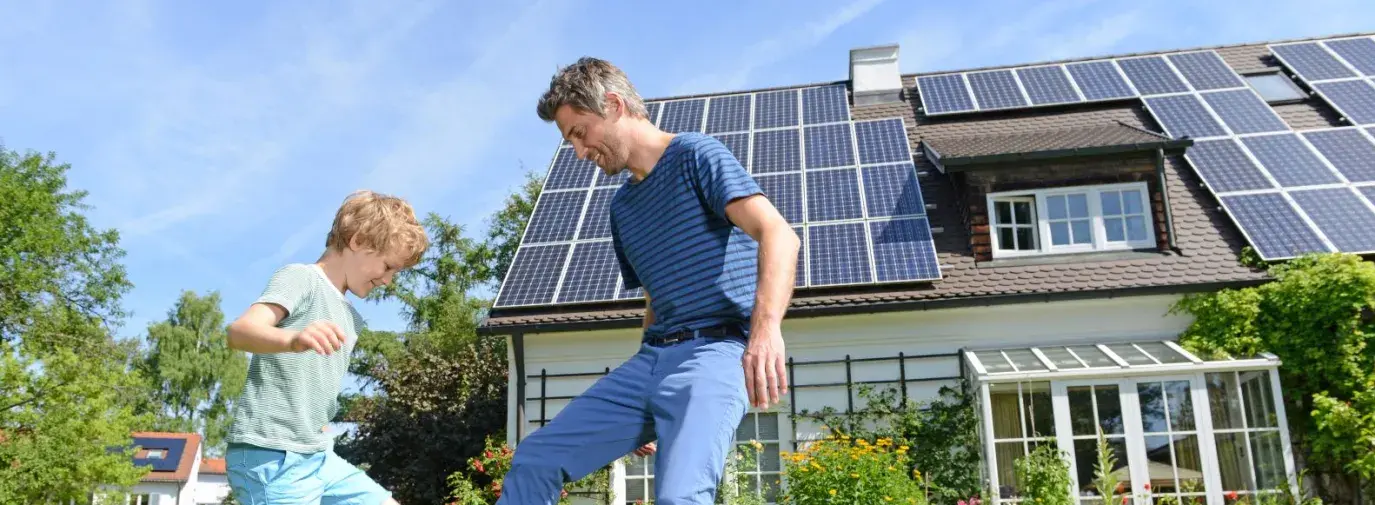
As one hemisphere prepares for the chill of winter and the other swaps coats for bathing suits, it’s time to look at how you use energy in your home.
How we use energy at home is a major factor in the fight against climate change. The residential sector accounts for roughly a fifth of the total energy usage in the US, with more than half of that used for heating and cooling, and using traditional systems, greenhouse gases are a significant problem.
It may seem like your single home won’t have a big impact, but the more people commit to energy efficiency, the more power we have to combat the rapid warming of our planet.
You’ve Heard of Solar…
Once, the idea of solar-powered energy systems seemed cutting edge, but it has become more common and affordable in addition to reliable and efficient.
According to the US Department of Energy, “The amount of sunlight that strikes the earth’s surface in an hour and a half is enough to handle the entire world’s energy consumption for a full year.”
The energy from solar can generate electricity, be stored in batteries, and/or heats a home’s hot water, all while reducing carbon in our atmosphere and, in the long run, saving you money.
You might be surprised to learn when the first solar panels in the United States appeared—1884, on a New York City rooftop. More than a century later, it’s easier than ever to get solar installed.
According to the Center for Sustainable Energy, residential solar panel systems run from $15,000 to $25,000. Those are big numbers, but there are multiple ways to invest in and benefit from solar at more affordable prices.
Whether you live in a home you own, rent an apartment, or somewhere in between, you can benefit from solar and this guide will help you do that.
Now, Try Heat Pumps
Solar and wind aren’t the only games in town providing sustainable energy.
Heat pumps are a great option on the market and are increasingly popular.
Even better, they can work with your electricity-generating solar panels to make your home the über-sustainable residence.
Using sustainably sourced electricity, heat pumps transfer heat collected from air, ground, or water outside the home to both warm and cool your home. The key here is that heat pumps don’t generate energy, they simply move already existing energy from one space to another. Heat pumps work best in warmer climates where winters are mild; for cold climates, you’ll want a dual heat pump, which relies on gas furnaces on particularly cold days.
There are several types of heat pumps, depending on which element you draw from, how much you’re willing to spend, and the size of your property. You can contact your local home improvement or heating/air companies or hire a local contractor. When researching contractors, look for accreditations like North American Technician Excellence or HVAC Excellence.
Air-to-air heat pumps are smaller and more affordable options, typically ranging from $3,500 to $7,500. It’s also an easier option if you already have ducts in your home. By simply transferring air between your home and outside, taking heat from a cool space and moving it to a warm place, you’ll save on energy bills in the long run.
Or you can go with a geothermal heat pump. This system transfers heat from ground and water sources near your home, benefiting from more consistent temperatures than outside air. Geothermal pumps cost more—between $6,000 and upwards of $30,000. They're also a bigger spatial commitment and the installation will tear up your yard.
The benefits of both options are big.
According to the Energy Department’s guide on heat pumps, geothermal ones “can reduce energy use by 30%-60%, control humidity, are sturdy and reliable, and fit in a wide variety of homes” and air systems result in 50% energy reduction. And they’ll last for over a decade with minimal maintenance.
An Energy Efficient Home Wins with the Inflation Reduction Act
Solar panels and heat pumps are now more accessible than ever, thanks to President Biden’s signing of the Inflation Reduction Act. Here’s what to look forward to:
30% annual tax credit for certain energy efficient home improvements, such as doors, windows, roofing, etc.
100% credit for installation of energy-efficient water heaters, heat pumps, central air conditioning systems, etc. with a $1,200 annual limit.
30% credit for installing qualifying systems that use solar, wind, geothermal, biomass or fuel cell power to produce electricity, heat water or regulate temperature.
Rebates for low- and middle-income families who purchase energy-efficient electric appliances, including $8,000 for a heat pump.
No Matter the Structure, Make Your Home Efficient
Though this type of infrastructure should be government-provided in the efforts to fight climate change, progress is often slower than we’d like, and bigger and costlier projects like these won’t work for everyone.
For those that can realistically get solar panels or a heat pump, they’re both great investments—for everyone else, you can still do your part through smaller choices like lightbulbs and composting bins, or if you rent, engage with your landlord about purchasing solar or join a community solar project.







